Data Vault
Introduction to Data Modeling in Snowflake

Nuno Rocha
Director of Engineering
Introduction to the data vault model
- Data vault model: A modeling technique focusing on historical data tracking, characterized by using hubs, links, and satellites.
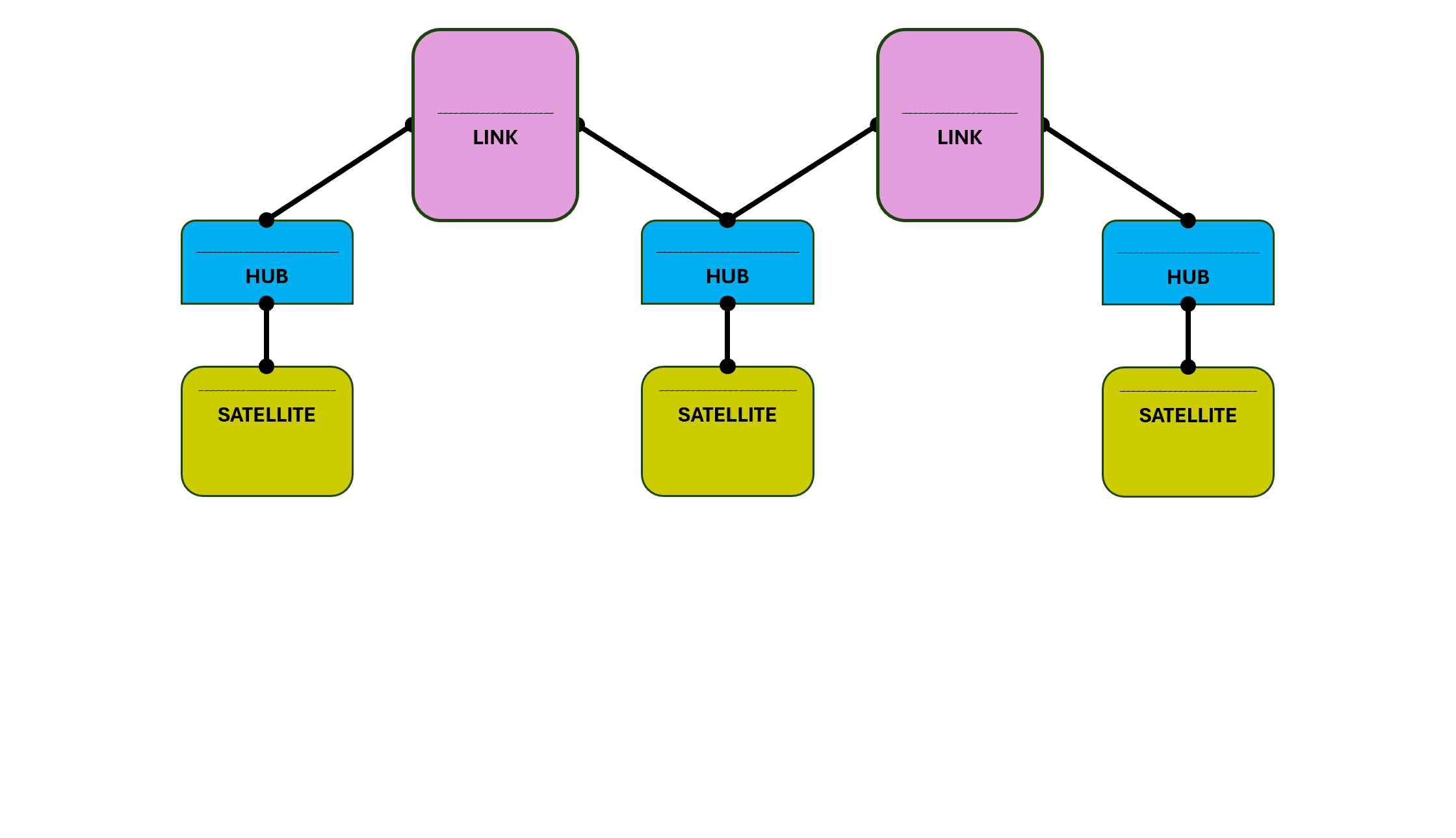
Components of data vault
- Hubs: Represent unique business concepts using a singular business key.
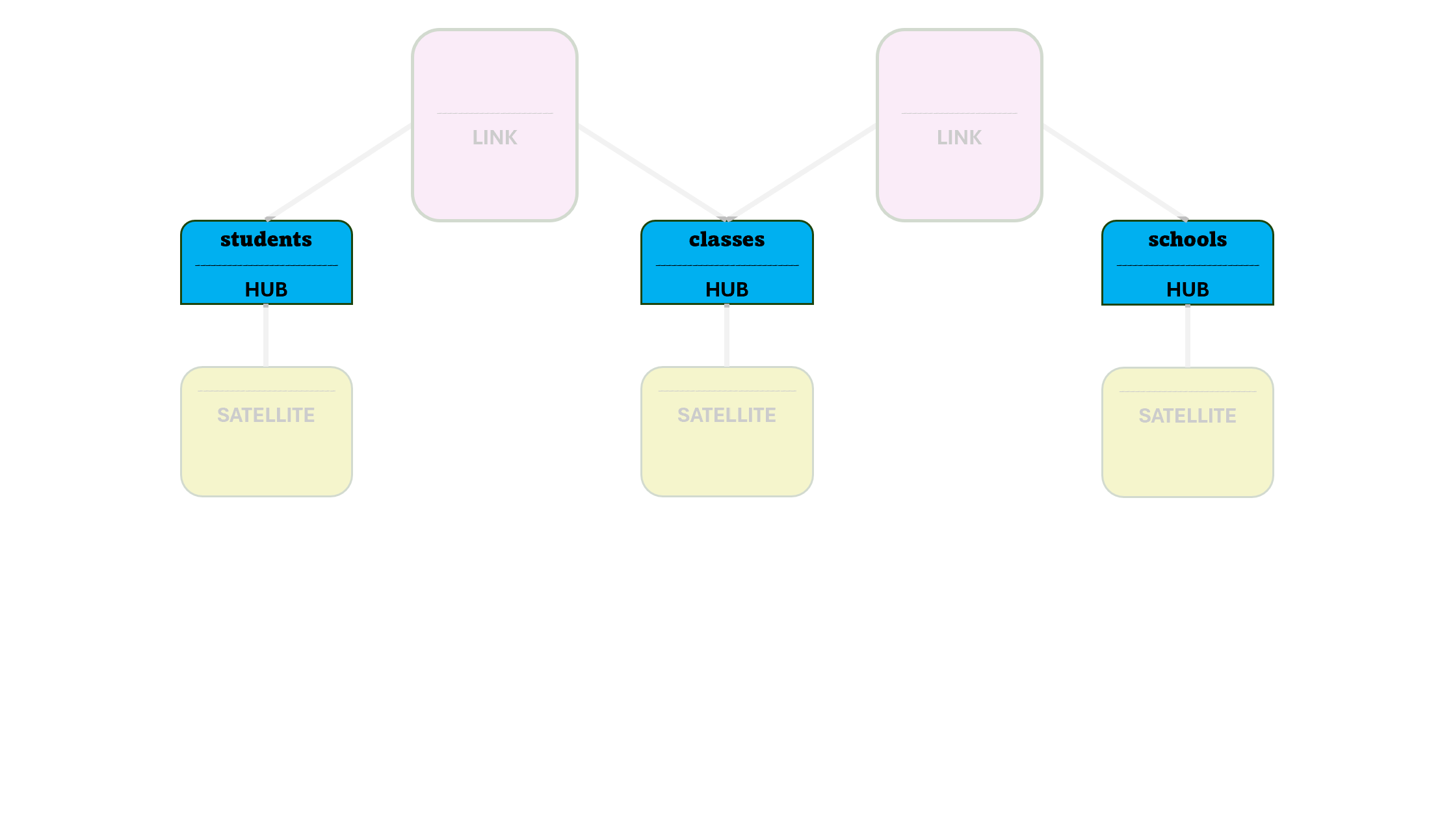
Components of data vault (1)
- Links: Capture relationships and interactions between hubs.
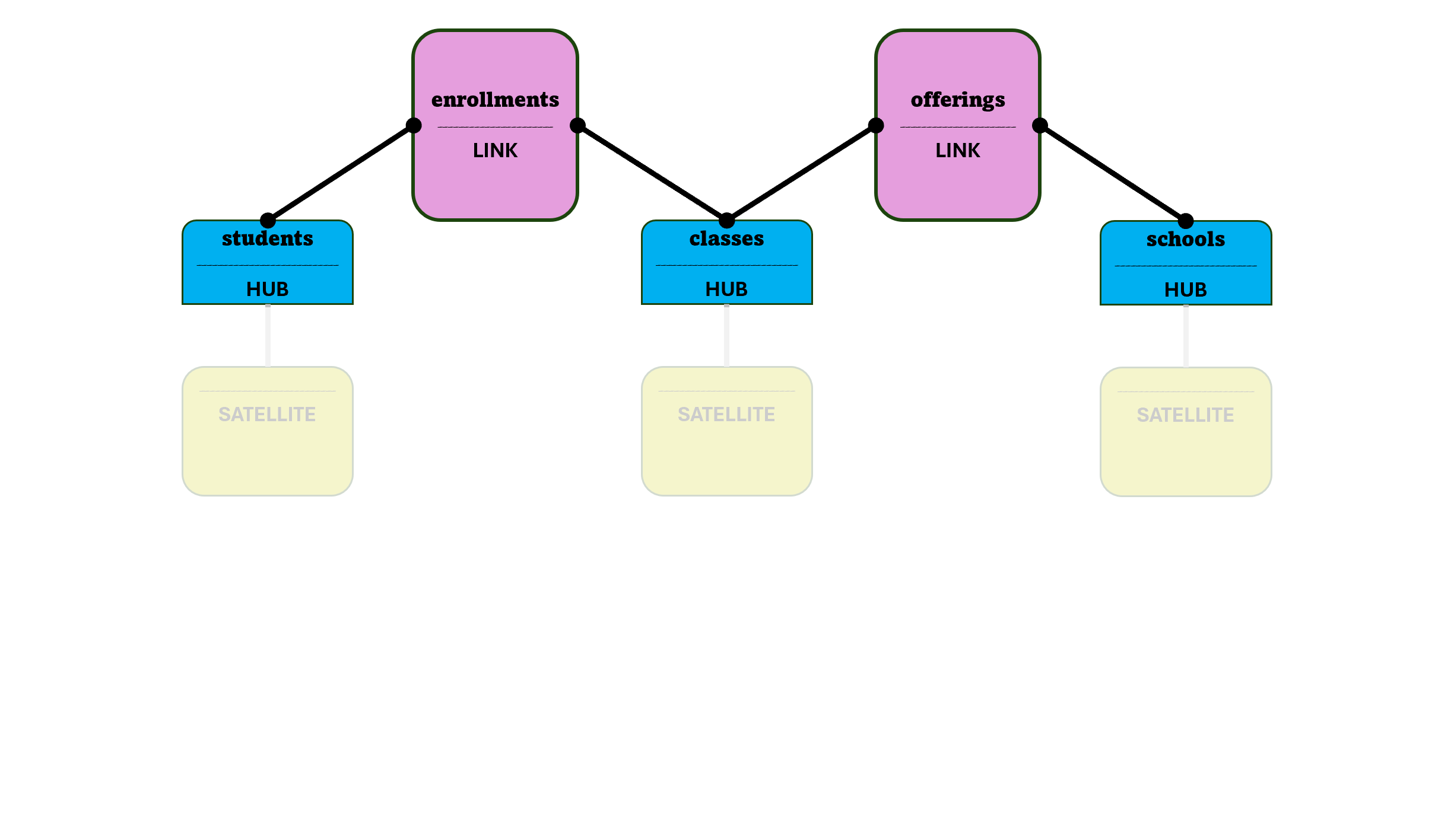
Components of data vault (2)
- Satellites: Store descriptive and historical details related to hubs and links.
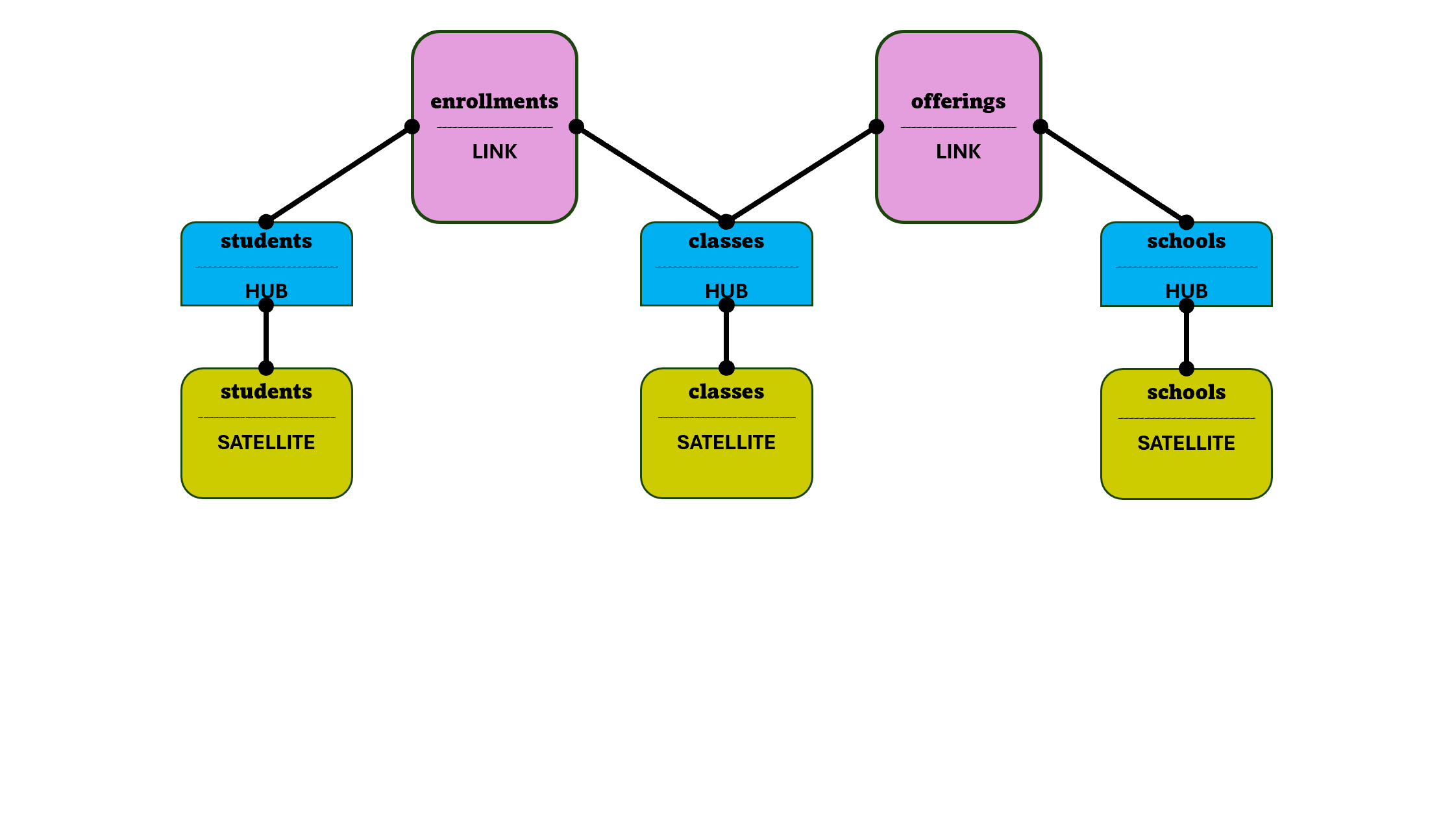
Building hubs
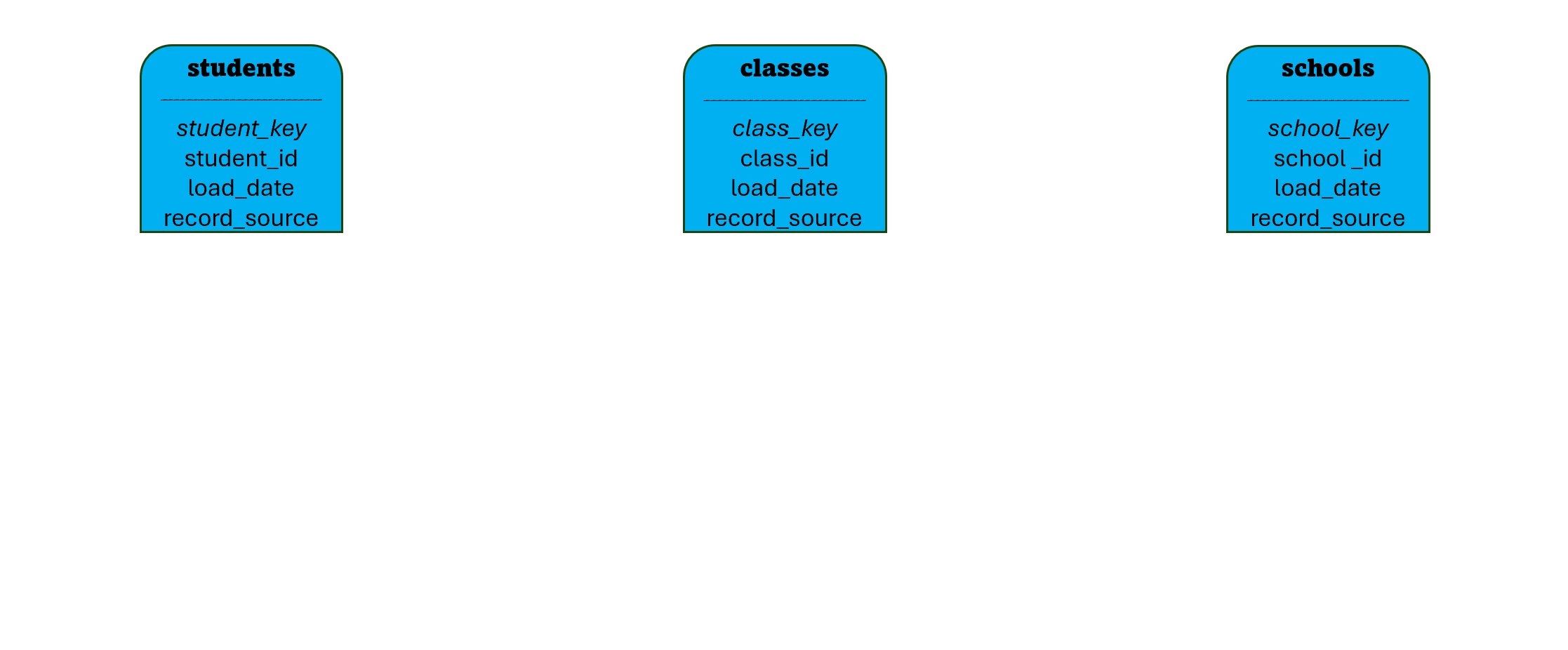
Building hubs (1)
AUTOINCREMENT: Attribute property to automatically generate unique, sequentially increasing numeric values for each new row.
CREATE OR REPLACE TABLE hub_students (
student_key NUMBER(10,0) AUTOINCREMENT PRIMARY KEY
);
Building hubs (2)
- Create a new hub with a unique numerical key generated automatically and the hub's concept id:
CREATE OR REPLACE TABLE hub_students (
student_key NUMBER(10,0) AUTOINCREMENT PRIMARY KEY,
student_id NUMBER(10,0)
);
1 Next, we list the business key that identifies each concept, student_id will identify each student
Building hubs (3)
- Add historical tracking attributes:
CREATE OR REPLACE TABLE hub_students (
student_key NUMBER(10,0) AUTOINCREMENT PRIMARY KEY,
student_id NUMBER(10,0),
load_date TIMESTAMP,
record_source VARCHAR(255)
);
Building hubs (4)
- Create new classes hub:
CREATE OR REPLACE TABLE hub_classes (
class_key NUMBER(10,0)
AUTOINCREMENT
PRIMARY KEY,
class_id NUMBER(10,0),
load_date TIMESTAMP,
record_source VARCHAR(255)
);
- Create new schools hub:
CREATE OR REPLACE TABLE hub_schools (
school_key NUMBER(10,0)
AUTOINCREMENT
PRIMARY KEY,
school_id NUMBER(10,0),
load_date TIMESTAMP,
record_source VARCHAR(255)
);
Building links
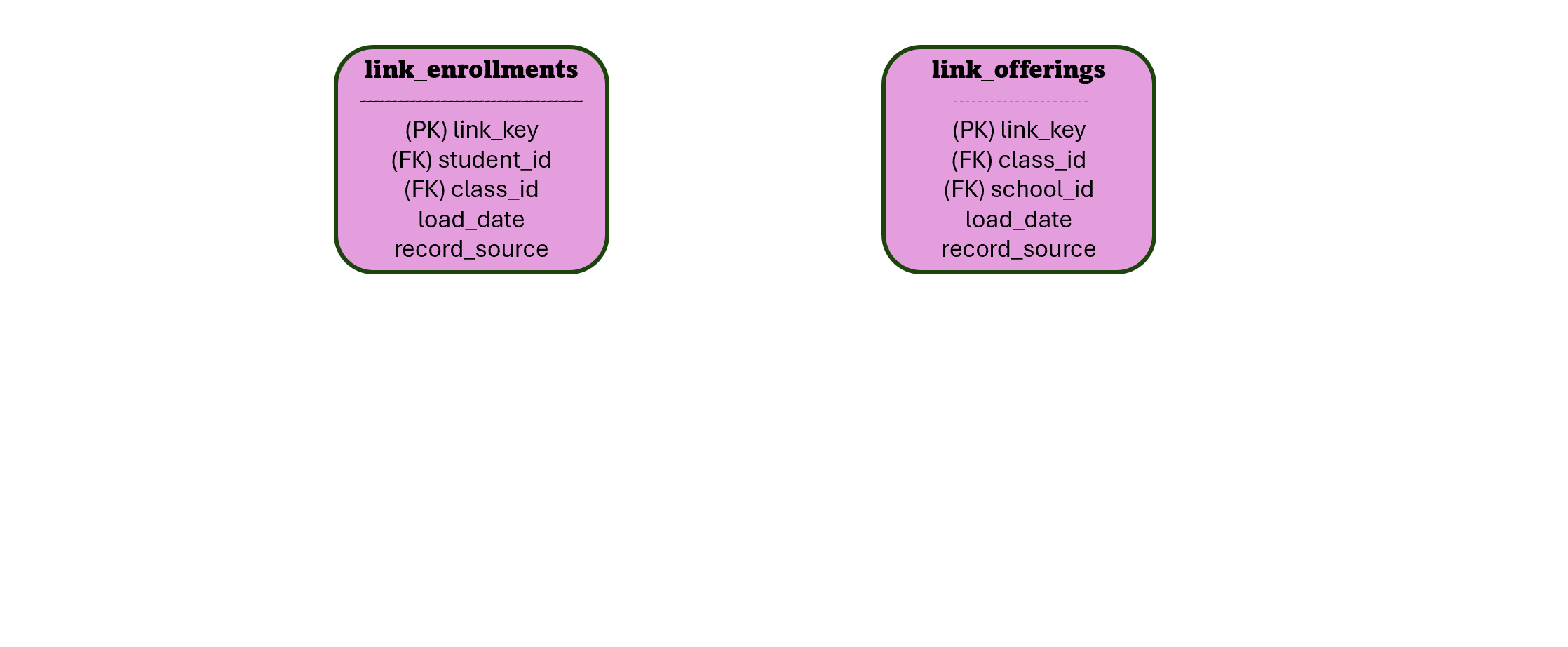
Building links (1)
- Create a link entity with a unique numerical key generated automatically:
CREATE OR REPLACE TABLE link_enrollments (
link_key NUMBER(10,0) AUTOINCREMENT PRIMARY KEY
);
Building links (2)
- Add relationships to other entities:
CREATE OR REPLACE TABLE link_enrollments (
link_key NUMBER(10,0) AUTOINCREMENT PRIMARY KEY,
student_key NUMBER(10,0),
class_key NUMBER(10,0),
FOREIGN KEY (student_key) REFERENCES hub_students(student_key),
FOREIGN KEY (class_key) REFERENCES hub_classes(class_key)
);
Building links (3)
- Add historical tracking attributes:
CREATE OR REPLACE TABLE link_enrollments (
link_key NUMBER(10,0) AUTOINCREMENT PRIMARY KEY,
student_key NUMBER(10,0),
class_key NUMBER(10,0),
load_date TIMESTAMP,
record_source VARCHAR(255),
FOREIGN KEY (student_key) REFERENCES hub_students(student_key),
FOREIGN KEY (class_key) REFERENCES hub_classes(class_key)
);
Building links (4)
- Create new offerings link entity:
CREATE OR REPLACE TABLE link_offerings (
link_key NUMBER(10,0) AUTOINCREMENT PRIMARY KEY,
class_key NUMBER(10,0),
school_key NUMBER(10,0),
load_date TIMESTAMP,
record_source VARCHAR(255),
FOREIGN KEY (class_key) REFERENCES hub_classes(class_key),
FOREIGN KEY (school_key) REFERENCES hub_schools(school_key)
);
Building satellites
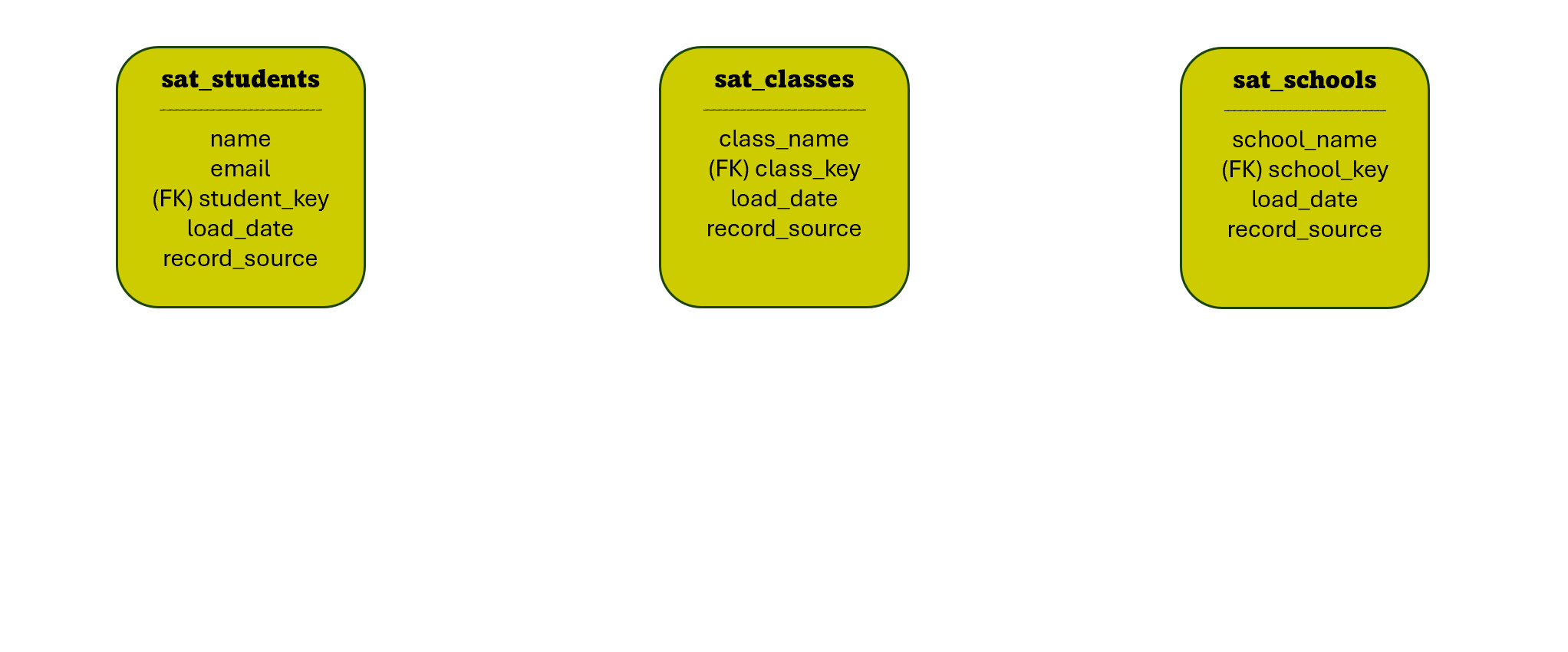
Building satellites (1)
- Create a new satellite entity listing all concept attributes:
CREATE OR REPLACE TABLE sat_student (
name VARCHAR(255),
email VARCHAR(255)
);
Building satellites (2)
- Add historical tracking attributes:
CREATE OR REPLACE TABLE sat_student (
name VARCHAR(255),
email VARCHAR(255),
load_date TIMESTAMP,
record_source VARCHAR(255)
);
Building satellites (3)
- Add a link between the satellite and its respective hub:
CREATE OR REPLACE TABLE sat_student (
student_key NUMBER(10,0),
name VARCHAR(255),
email VARCHAR(255),
load_date TIMESTAMP,
record_source VARCHAR(255),
FOREIGN KEY (student_key) REFERENCES hub_students(student_key)
);
Building satellites (4)
- Create a new class satellite:
CREATE OR REPLACE TABLE sat_class (
class_key NUMBER(10,0),
class_name VARCHAR(255),
load_date TIMESTAMP,
record_source VARCHAR(255),
FOREIGN KEY (class_key)
REFERENCES hub_classes(class_key)
);
- Create a new class school:
CREATE OR REPLACE TABLE sat_school (
school_key NUMBER(10,0),
school_name VARCHAR(255),
load_date TIMESTAMP,
record_source VARCHAR(255),
FOREIGN KEY (school_key)
REFERENCES hub_schools(school_key)
);
Terminology and functions overview
- Data vault model: A modeling technique focusing on historical data tracking, characterized by using hubs, links, and satellites.
- Hubs: Represent unique business concepts using a singular business key.
- Links: Capture relationships and interactions between hubs.
- Satellites: Store descriptive and historical details related to hubs and links.
CREATE OR REPLACE TABLE: SQL command to create or replace a table structure.PRIMARY KEY: SQL clause to define a column as the unique identifier.AUTOINCREMENT: Attribute property to automatically generate unique, sequentially increasing numeric values for each new row.FOREIGN KEY (...) REFERENCES (...): SQL clause to create a link between two tables.
Functions overview
CREATE OR REPLACE TABLE table_name (
-- Create an auto generated unique value as primary key
unique_key column_datatype AUTOINCREMENT PRIMARY KEY,
other_business_key column_datatype,
foreign_column column_datatype,
other_foreign_column column_datatype,
-- Adding relationship with other entities
FOREIGN KEY(foreign_column) REFERENCES foreign_table(PK_from_foreign_table),
FOREIGN KEY(other_foreign) REFERENCES foreign_table(PK_from_other_foreign)
);
Let's practice!
Introduction to Data Modeling in Snowflake

